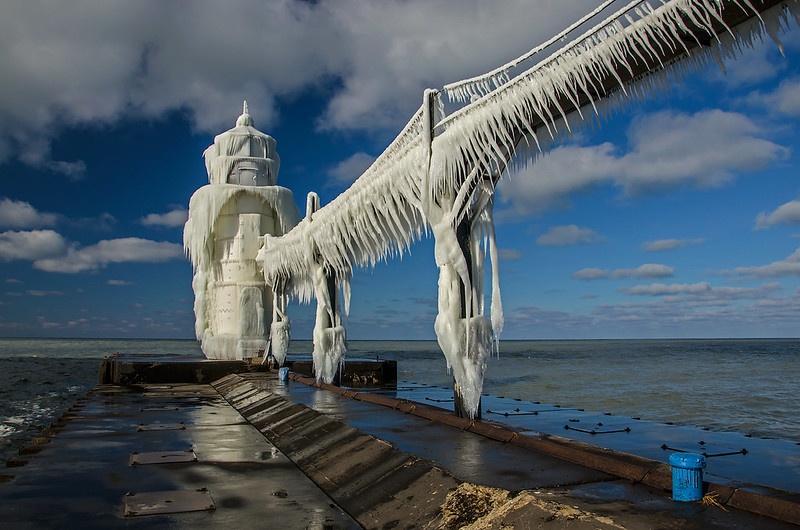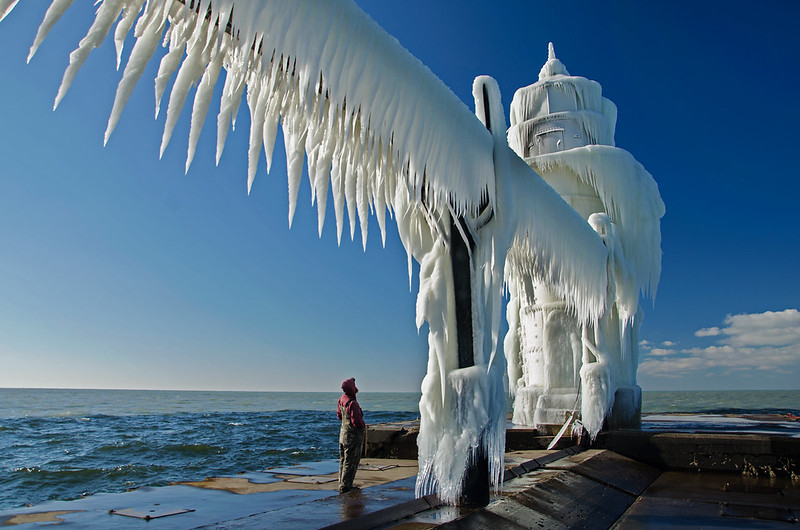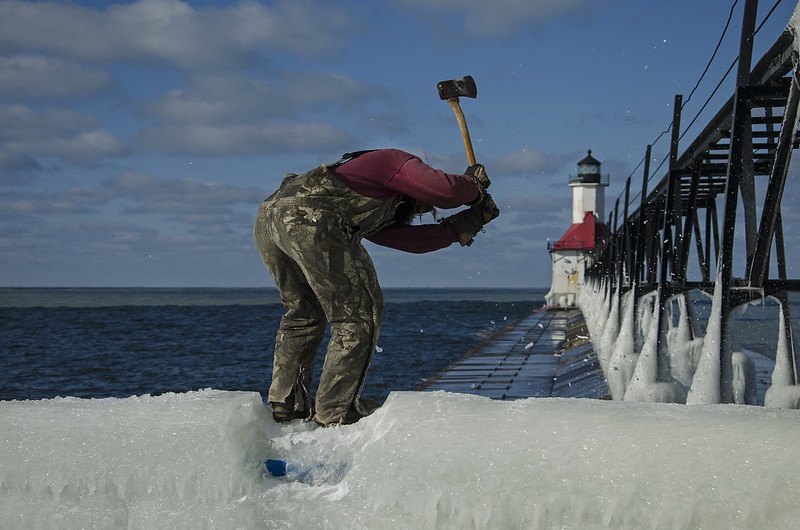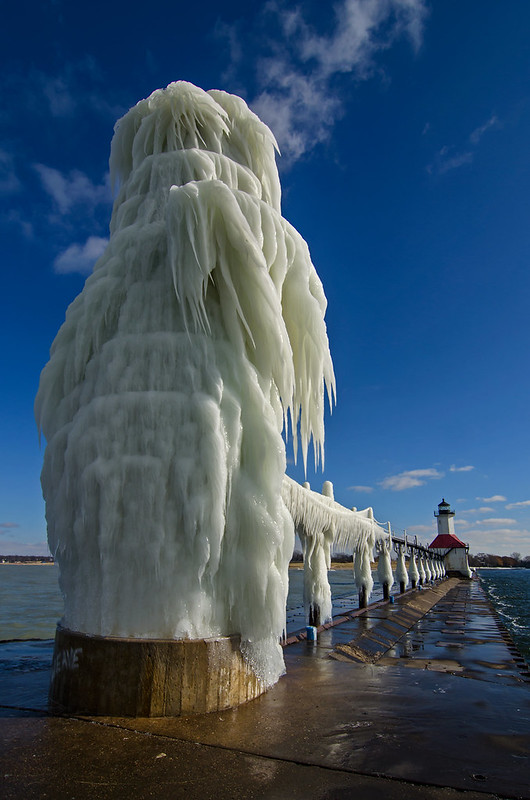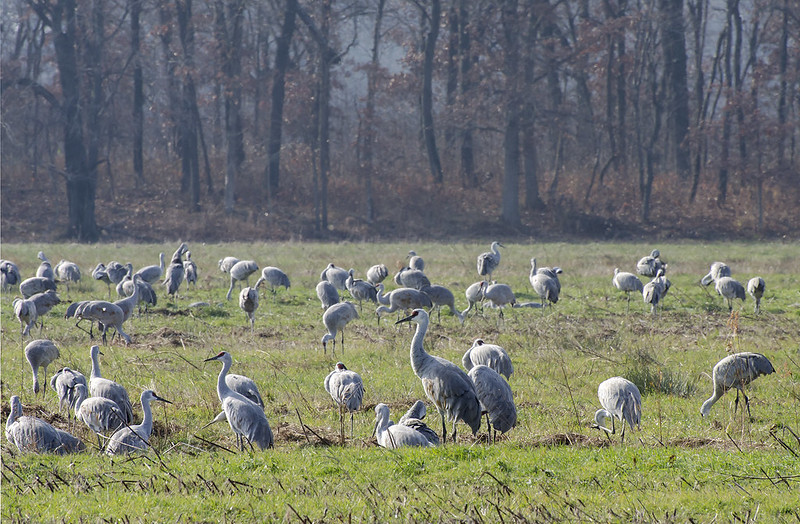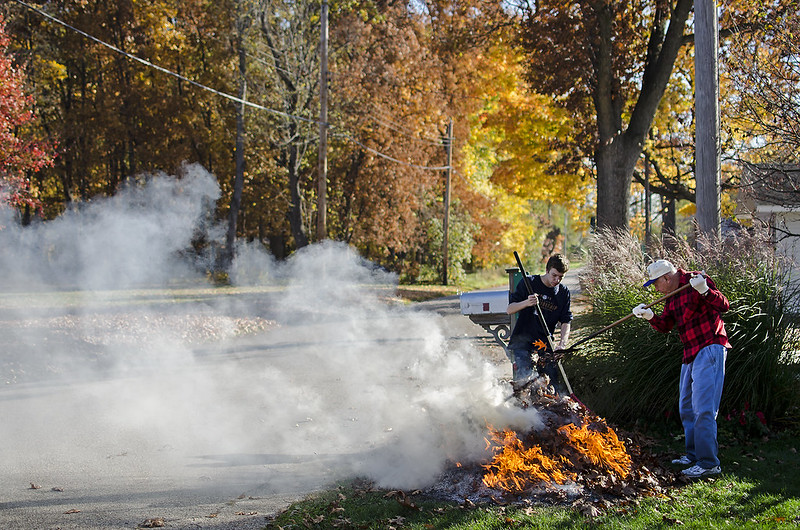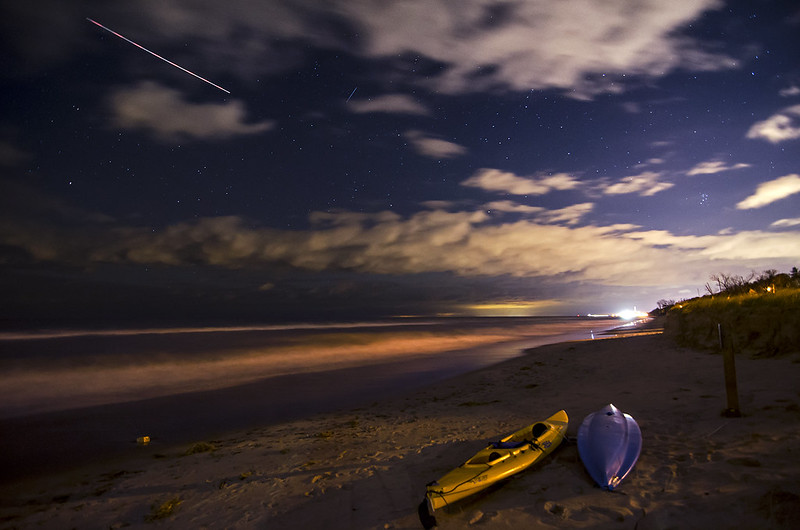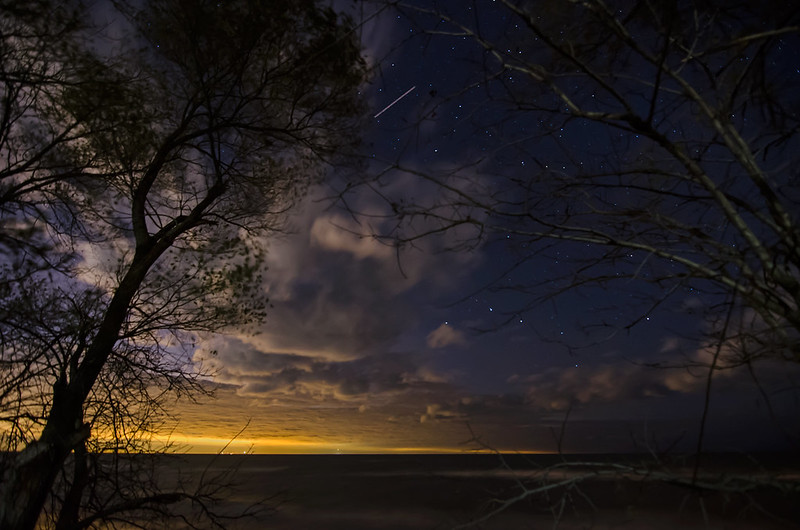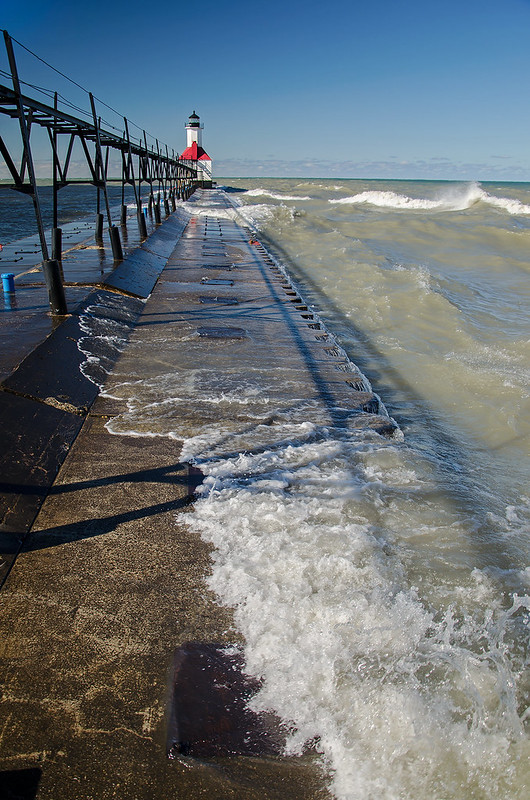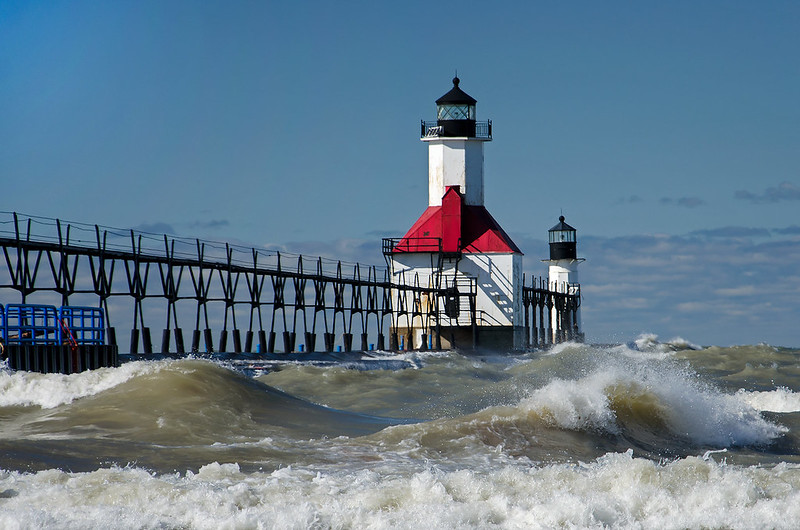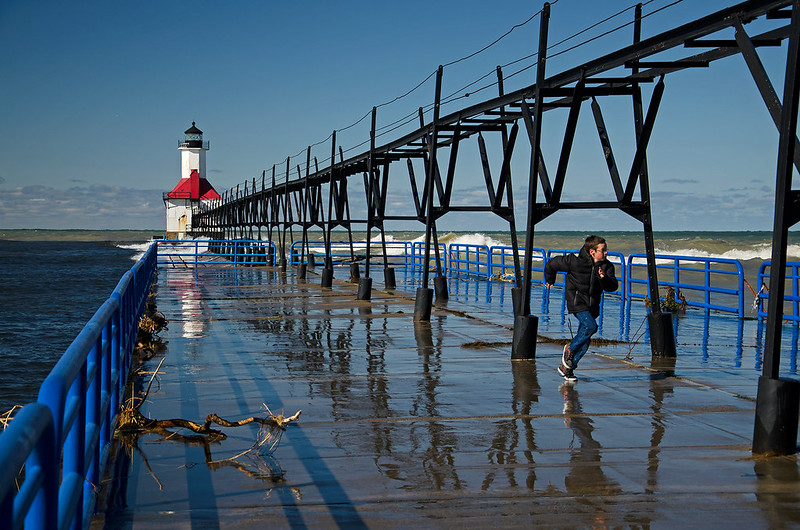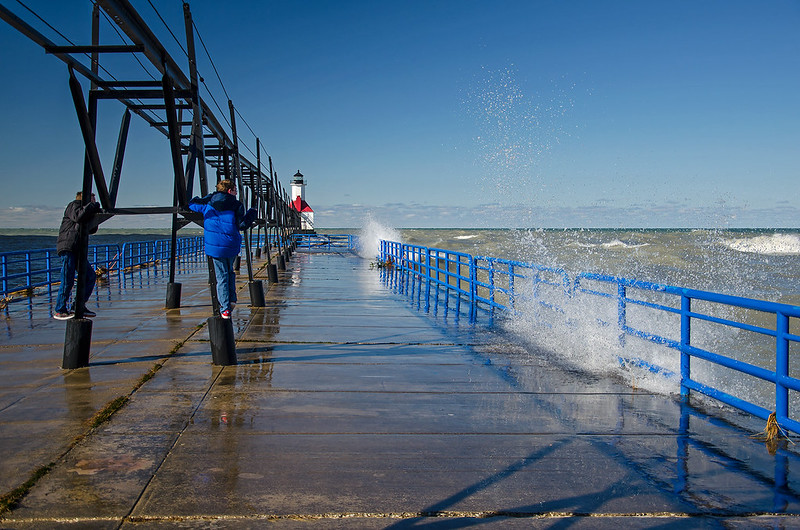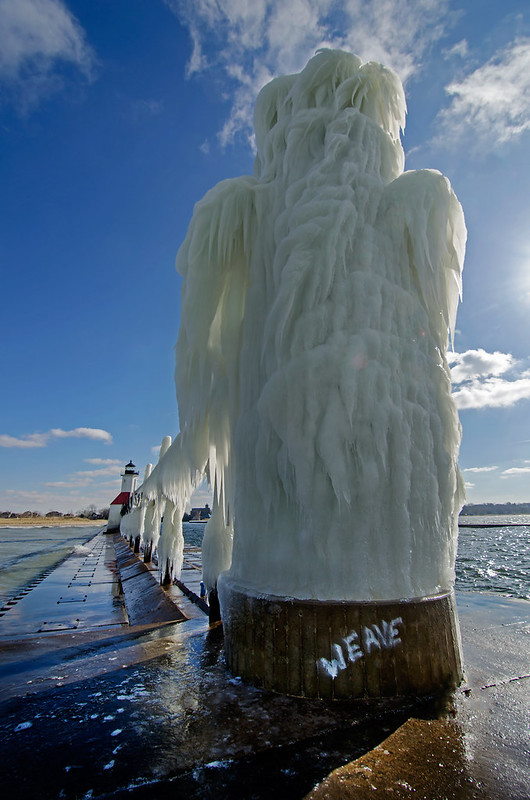
An early cold spell turned the St. Joseph, Michigan lighthouse into a 35 foot tall Abominable Snow Man - well, actually an Abominable Ice Man. I you look closely at the ice formation, you can see two shoulders, arms, a head full of disheveled hair, and a long beard hanging down.
Each time this light ices up, the details are different. The ice twists and turns as the wind blows the water sprayed onto the lighthouse, then freezes in the direction of the wind.
Making the trek out to the outer lighthouse was made easy by a local man who chopped through the ice build up on the railings of the pier. The deck of the pier was mostly wet, not frozen, as the slightly above freezing temperature waters from Lake Michigan were still washing over, keeping the ice from building up. The only icy place on the pier seemed to be right where I was standing to capture this image, but as the sun made its way around the lighthouse and the ice came out of the shadow of the tower, the ice melted enough for me to safely walk on.
Warm weather later in the day, and for the next two days, melted all of the ice - at least until the next cold, windy day on Lake Michigan.
